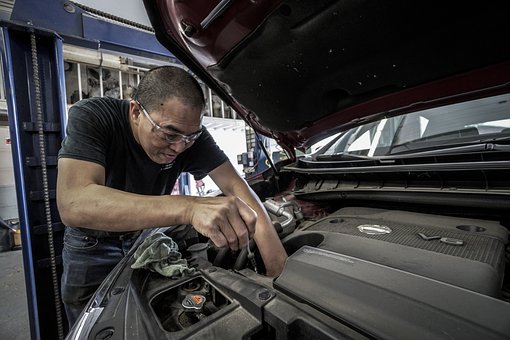20 years was enough. Bill was ready to sell his auto repair shop. At least he thought he was. Bill loved his business, but I didn’t – and neither would potential buyers.

The business did decent revenue, and showed a reasonable profit for the market it was in. On paper it was a sell-able business. But during our walk-through of the shop, I was struck by how crowded the space was. There was a lot of old equipment, but Bill bragged as we passed each piece. Apparently, every one could be used to do a specific repair.
The problem, it turned out, was that most of the equipment wasn’t being used anymore. The shop no longer did these repairs. Essentially, the room was full of dead equipment left-over from abandoned service expansion ideas.
The overwhelming feeling I was left with after the tour?
Meh.
Bill’s gear made his business seem old and ineffective. It kept his business from being desirable, and that caused two problems:
#1. Clutter Disguises the Real Appeal of the Business
Almost every article about staging a home for sale talks about the importance of removing clutter. In a house, clutter confuses the space visually for a potential buyer. It can make a room seem smaller, more cramped, and less appealing. In the same way, clutter will absolutely kill a buyer’s desire for your business.
Business “clutter” is any dead equipment that isn’t serving a productive purpose for the business. This “equipment clutter” confuses the physical space, and often the balance sheet, but the negative impact on the business goes well beyond the visual.
Back to Bill. In the same equipment filled shop was a car that Bill and his crew were restoring. It turned out that the restoration service had been a consistent, profitable, revenue stream. Unfortunately, the team could only do one restoration project at a time due to space restrictions, you guessed it, because of the extra unused equipment in the shop.
Even if he didn’t want to sell the business, Bill needed to sell off the old, unused equipment, and use the new space to expand his existing restoration service. He needed to leave behind the old and build on what was working.
This brings us to the key questions. Why did Bill keep the equipment? Why was it so detrimental to the potential sale of his business? Surely, we could find a buyer that could see past the old stuff to the underlying value of the business. Certainly, a potential buyer could do the cleanup work that Bill seemed unwilling to do?

#2. Clutter Warps the Owners Sense of Real Business Value
Old equipment piles up, but as business owners we lived those purchases. We can pull items out of the equipment pile and instantly remember the purpose, and the potential tied to that piece of equipment. That’s where the problem is. Too often we believe the old potential has value – value that someone else should be willing to pay for when they buy our business. That’s what Bill believed.
Bill wanted $240,000 for his business based on what he paid for the equipment, and his belief about “what it could be” if the equipment was in service providing revenue and profit. In reality, the operating business was only worth $120,000. That gap between Bill’s perceived value, and a realistic value, was too large to overcome and Bill never moved forward. The clutter, and Bill’s belief about its value, killed any potential for a sale.
Separate the Value of the Clutter from the Value of the Business
If you think your old equipment has value, maybe you’re right. Prove it. Either put it to work in your business or sell it to someone else. That equipment will not make your business more attractive to a buyer – it will only be a barrier that keeps them from seeing the real business.
If you’re right about the value of the equipment you can benefit from the sale of it in a stand-alone deal. If you’re wrong about the value of the equipment, you won’t sabotage the much larger potential for selling your business because of it. Let it go — don’t clutter your core business with the dead weight.
Look for, and eliminate, the clutter.
Are you serious about making your business more desirable to a potential buyer? When is the last time you took a “kill the clutter” walk through the business? Try it. Go in on some Sunday morning and place a Post-It on everything that isn’t serving a productive purpose. It might be an old pop machine that doesn’t get used, or a substantial piece of equipment that you never put into service. Those items are your clutter. Removing them can be a critical step in making your business more desirable to a potential buyer, but also in clarifying the value of the business in your own head.
Don’t make Bill’s mistake. Your old equipment will not make your business more desirable to a potential buyer. Get rid of it now and focus your time and energy on the results generated by the core business.